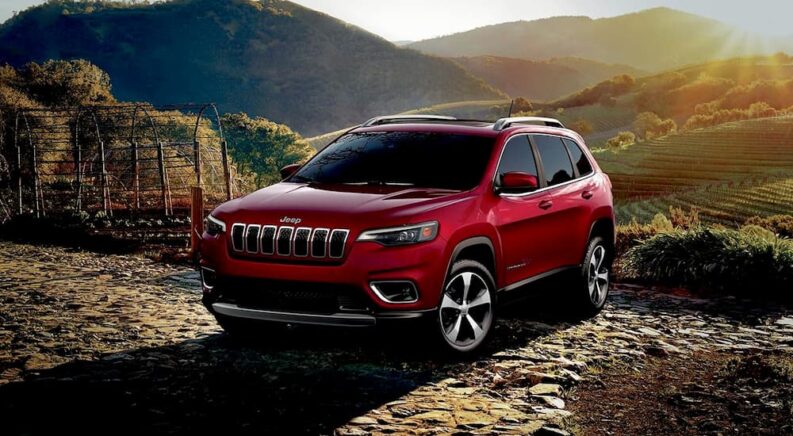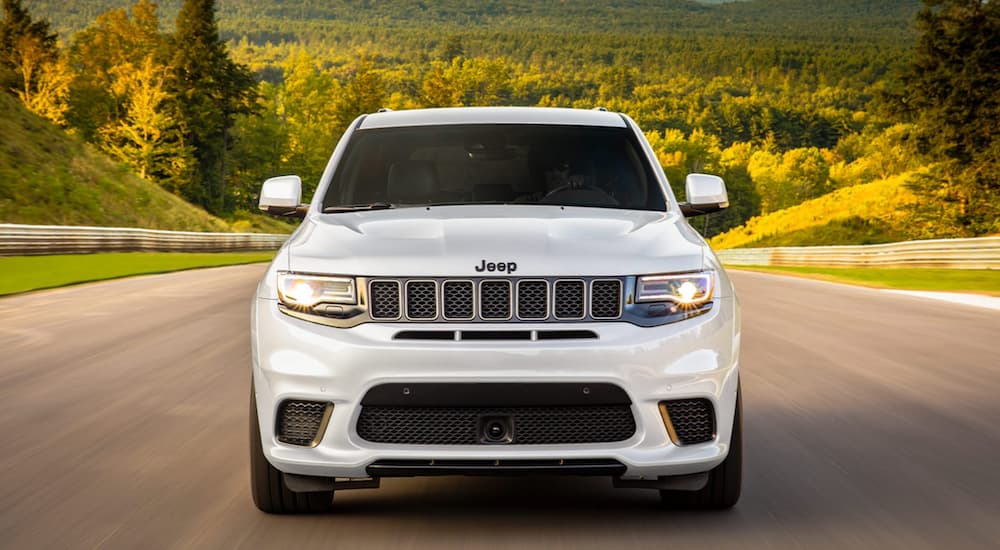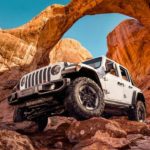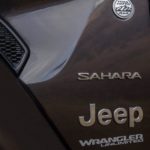The Jeep Wrangler has an easy job. Even as a former Wrangler owner, I’ll admit it. It’s well-known for its off-road prowess, with its reputation built on its legendary capability and earning it top honors as one of the most coveted used Jeeps for sale on lots across the country. Everyone knows what the Wrangler offers as an adventurer; I certainly did when I took my stock Wrangler off the pavement for the first time, testing its limits against diehard Toyota fans. I never doubted adventure was built into its DNA, but that adventurous strain isn’t limited to the obvious. How so?
The Wrangler has an easy job because, anytime you ask about the most capable Jeep to venture off the pavement, the Wrangler is at the top of the list. Yet, there’s far more to Jeep’s legendary capability than its iconic SUV. When MotorTrend started its Four Wheeler of the Year competition in 1974, it gave us a glimpse into that capability and continues to do so, as we see from the many Jeep models to have earned the title that weren’t the Wrangler. (Cue the drumroll.)
The First Four-Wheeler of the Year: 1974 Cherokee
Born of necessity at the rise of World War II, Jeep was well-established as an adventure brand throughout the 1960s and 1970s. Models like the Wagoneer showcased Jeep’s ingenuity in blending luxury and capability, earning the Wagoneer its title as the first four-wheel-drive luxury SUV. Today, such models are seemingly a dime a dozen, but the Wagoneer’s early success set the stage for an SUV destined for greatness.
While the Wagoneer catered to families and luxury-minded drivers, Jeep recognized the need to appeal to younger drivers. The answer came in 1974 with the Cherokee, a more athletic and youthful alternative to the Wagoneer. With a sport steering wheel, racing stripes, and Jeep’s legendary four-wheel-drive system, the Cherokee made history as the first vehicle to earn the Four Wheeler of the Year Award, formerly Four Wheeler magazine’s Achievement Award.
New Generation, Another Award: 1984 Cherokee
The first-generation Cherokee satiated the demand for a sporty version of the Wagoneer. Still, Jeep’s insatiable need to exceed expectations prompted the automaker back to the drawing board in the early 1980s. Jeep invested $250 million in redesigning the Cherokee, moving it away from its Wagoneer sibling by swapping the traditional body-on-frame chassis for something truly revolutionary: a unibody platform.
Jeep’s investment set the Cherokee on a new trajectory, solidifying its fate as a competent adventurer beyond the pavement. With the unibody platform, the Cherokee was lighter, shorter, and lower to the ground, with improved aerodynamics enhancing its agility on various terrain. Of course, Jeep refused to stop there and appealed to drivers wanting a say in the Cherokee’s capability.
Jeep set a new standard in the segment when it gave drivers a choice of four-wheel drivetrains. The 1984 Cherokee was available with the Command-Trac Part-Time 4WD system or the Selec-Trac Full-Time 4WD system. The choice of capability and the Cherokee’s revolutionary design earned it another Four Wheeler of the Year title in 1984, skyrocketing it to success throughout the new millennium as sales climbed. As Jeep history buffs already know, that wasn’t the Cherokee’s last time in the winner’s circle.
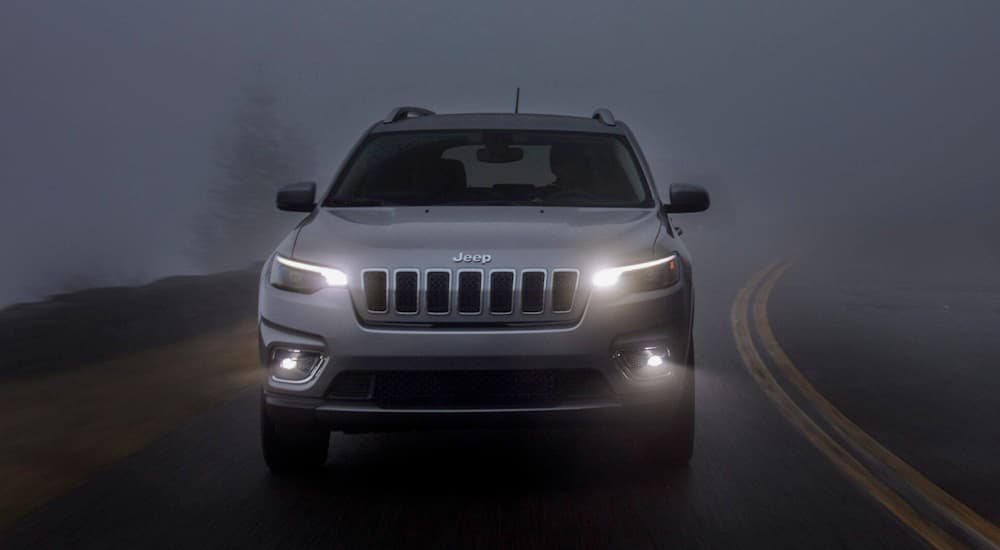
A Truck-Based Cherokee: 1986 Comanche
Like any manufacturer with a solid business sense, Jeep recognized and capitalized on the Cherokee’s massive success in the 1980s. With $250 million invested in the Cherokee’s redesign, Jeep didn’t exactly have to reinvent the wheel; rather, it maximized that investment by using the XJ Cherokee platform as inspiration for another model. All that was required was redesigning the back of the Cherokee—a redesign that eliminated the rear cargo area and replaced it with an open bed.
The Comanche pickup debuted in 1986 and instantly set itself apart from traditional trucks. How? Sharing the XJ platform meant the Comanche was a uniframe truck with the same four-cylinder and V6 powertrains and legendary four-wheel drivetrains as its SUV sibling. Because of this, the Comanche’s fate was already written in the stars when it debuted; the truck earned a Four Wheeler of the Year title in 1986 and remained in production until 1992 as the final curtain call for Jeep’s trucks until the Gladiator’s grand return in 2019. Talk about big shoes to fill!
The Most Awarded SUV Ever: Grand Cherokee
There’s an ebb and flow throughout Jeep’s history that reveals the evolution of our needs as drivers. The Cherokee answered the rising demand for a youthful and sportier alternative to the Wagoneer, a history-making SUV revered for its opulence and off-road prowess. Fast-forward to the early 1990s, and we see this evolution again as the Cherokee made room in the lineup for its grander sibling, the Grand Cherokee.
With a larger footprint and a stronger penchant for luxury, the 1993 Grand Cherokee took the industry by storm when it crashed through the glass at the North American International Auto Show in Detroit. The symbolism was undeniable, with Jeep announcing to the world that the Grand Cherokee would set new benchmarks of excellence, capability, and luxury across the industry. The Grand Cherokee never missed a beat, earning MotorTrend magazine’s Truck of the Year and a Four Wheeler of the Year title in 1993.
The Grand Cherokee earned its place in the spotlight, introducing many features that have served as the framework for subsequent models. The 1993 Grand Cherokee’s Quadra-Coil suspension heightened its agility and became a must for the SUV. Eventually, the Quadra-Coil evolved into the class-exclusive Quadra-Lift air suspension with electronic adaptive damping—a feature found on models like the 2021 Grand Cherokee. These components and a choice of Jeep’s legendary four-wheel-drive systems complement the Grand Cherokee’s remarkable luxuries that prove venturing off the pavement never has to sacrifice your comfort.
Today, the Grand Cherokee continues its reign as the most-awarded SUV in Jeep history. It offers class-leading capabilities and innovative features but doesn’t stray from its adventurous roots. Instead, Jeep entices drivers to want and expect more from this illustrious SUV by introducing more capability with trims like the Grand Cherokee Overland and Grand Cherokee Trailhawk. Taking adventure to the extremes, the Grand Cherokee Overland earned the 2002 and 2011 Four Wheeler of the Year titles, with the Grand Cherokee Trailhawk taking the title in 2017.
Jeep Adventures: Moving Beyond the Wrangler
The Wrangler deserves plenty of attention, from its instantly recognizable boxy design to its proven capability as a Trail Rated adventurer. I adored my Wrangler, draped in a blend of school bus yellow and orange that made it easy to spot by friends on the road. The Jeep Wave family is friendly and remarkable, but that family and the legendary capability ingrained in the Wrangler’s DNA aren’t limited to this boxy adventurer.
Unlike many other automakers, who offer specialty trims with little beyond a sporty aesthetic, Jeep doesn’t design mall crawlers and pavement dwellers. Instead, adventure is at the heart of every Jeep model ever made, so the Wrangler doesn’t have the market cornered; we see as much in models like the Cherokee, Comanche, and Grand Cherokee, which embody Jeep’s ingenuity and ongoing success in building road warriors that are confident and capable of venturing beyond the pavement.

